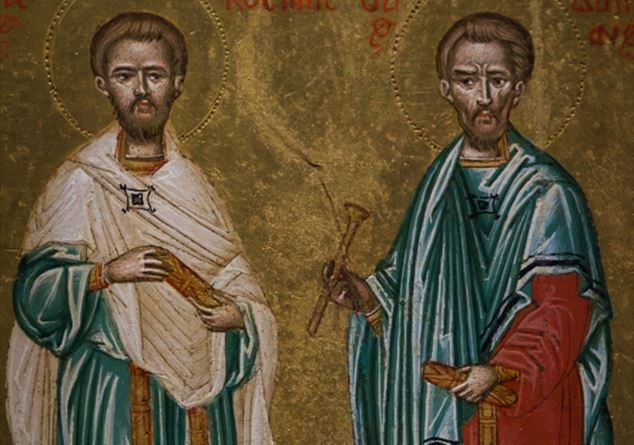Di Simone (later renamed Pietro da Jesus himself) the Gospels, usually very parks in psychological characteristics, offer us a vivid portrait. It is impetuous, blood: it speaks and acts of impulse, to the point of deserving the reproaches of the master. But it is also the one who, inspired by the Holy Spirit, senses before the others the divine nature of Jesus: «I believe Lord that you are the Christ, the son of the living God».
Hence the call to a very particular mission, that of driving and support of the community. “And I tell you that you are Pietro and on this stone I will build my church and the doors of hell will not prevail against it. I will give you the keys to the kingdom of heaven and everything you will bond on earth will be linked in the skies and everything you will dissolve on earth will be dissolved in the skies». It is this same primacy that the Catholic Church recognizes in the Pope, whose symbols, the keys and the ring of the fisherman, immediately refer to the figure of the apostle.
Very human in his fragility, Pietro is, like the other disciples, lost in the terrible moment of the condemnation and agony of Jesus. But more than others he brings a weight on him. “I don’t know that man”: with these words three times denying Christ publicly, abandoning him to his destiny.
Yet, paradoxically, this episode allows him to experiment, perhaps more than anyone else, the embrace of mercy. “Simone Di Giovanni, do you love me more than they?», The Risen One asked him three times, then immediately renewing the call to guide the flock of the faithful” grazes my sheep “. A call to which, after Pentecost, the apostle consecrates life, becoming a reference for Christians in Jerusalem, Palestine, Antiochia, and operating miracles in the name of Jesus.
So far the biblical sources: the rest is tradition. Various testimonies tell of a transfer to Rome. In the heart of the empire, the disciple lives for a few years, preaches and coordinates the community. Martyr dies under Nero, probably around 67 AD
Carlo Crivelli, Santi Pietro and Paolo, 87×44 cm, London, National Gallery
Paolo, as persecutor of Christians to Apostle
Very different is the human and spiritual story of Paolo di Tarsowhich, unlike Peter, has no way of meeting the historical Jesus along the streets of Palestine. Instead, he meets him in a mysterious way, after years of fierce persecutions against the Church. For a part of his life Saul (this is his name before conversion) is an inflexible, ruthless man, and affects Christians with a determination that seems to defeat in fanaticism.
Then, suddenly, something happens. “All the life of the apostle is marked by that event – we read in the book Paolo’s confessionstaken from a course of spiritual exercises that Cardinal Carlo Maria Martini held in 1981 – it is difficult for us to understand it, because, in reality, Paul himself understands only at the time of death what that episode meant for him “. It is the so -called electrocution on the way of Damascus. It is that “route accident” that forces him to a change of perspective. And to walk towards a new life: thus begins his apostolate. Paolo understands that the evangelical message cannot be limited to the Jewish communities, but has a universal dimension. With him the Church is discovered in all respects missionary, open to the “Gentiles”, the pagans, the distant.
Caparbio man, tireless, of great culture, excellent speaker, Paolo abandoned his securities to constantly get involved, driven by a single certainty: “For me to live is Christ”, as he himself writes in the letter to the Philippians. His travels take him from Arabia to Greece, from Türkiye to Italy. In Rome he is arrested, but for a certain time he manages, although among a thousand difficulties, to preach.
How Pietro dies martyr, probably around 67 AD His 13 letters, inserted in the canon of the New Testament, are a doctrinal pillar of Christianity and an essential reference for the faithful of all historical eras and all continents.
The two apostles symbol of the plural church
«In Rome Pietro finds Paolo – writes Enzo Bianchi, prior of the Bose community, commenting on the Gospel of June 29 – We do not know if in the newspaper of Christian testimony, but certainly in the great sign of martyrdom. Paolo, “the other”, the different apostle, placed next to Peter in his otherness, as if to guarantee from the first steps that the Christian Church is always plural and feeds on diversity “.


